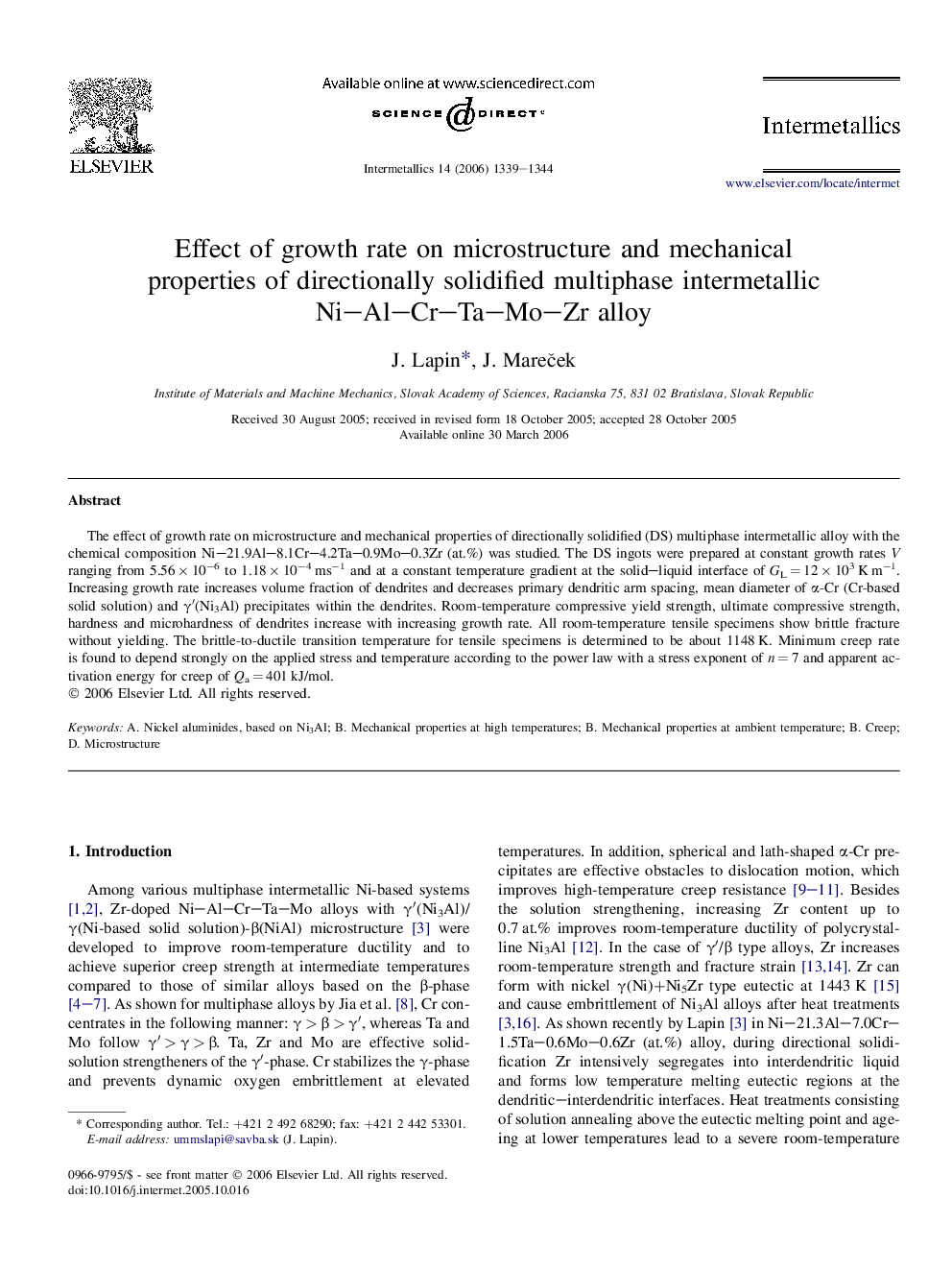| Article ID | Journal | Published Year | Pages | File Type |
|---|---|---|---|---|
| 1602090 | Intermetallics | 2006 | 6 Pages |
Abstract
The effect of growth rate on microstructure and mechanical properties of directionally solidified (DS) multiphase intermetallic alloy with the chemical composition Ni-21.9Al-8.1Cr-4.2Ta-0.9Mo-0.3Zr (at.%) was studied. The DS ingots were prepared at constant growth rates V ranging from 5.56 Ã 10â6 to 1.18 Ã 10â4 msâ1 and at a constant temperature gradient at the solid-liquid interface of GL = 12 Ã 103 K mâ1. Increasing growth rate increases volume fraction of dendrites and decreases primary dendritic arm spacing, mean diameter of α-Cr (Cr-based solid solution) and γâ²(Ni3Al) precipitates within the dendrites. Room-temperature compressive yield strength, ultimate compressive strength, hardness and microhardness of dendrites increase with increasing growth rate. All room-temperature tensile specimens show brittle fracture without yielding. The brittle-to-ductile transition temperature for tensile specimens is determined to be about 1148 K. Minimum creep rate is found to depend strongly on the applied stress and temperature according to the power law with a stress exponent of n = 7 and apparent activation energy for creep of Qa = 401 kJ/mol.
Keywords
Related Topics
Physical Sciences and Engineering
Materials Science
Metals and Alloys
Authors
J. Lapin, J. MareÄek,
